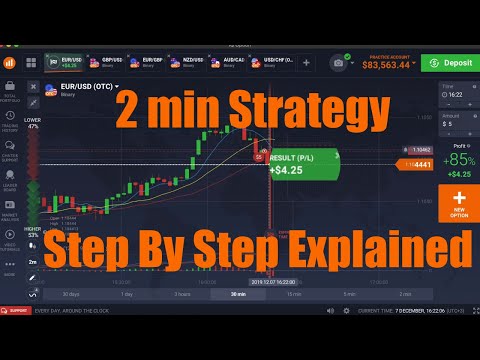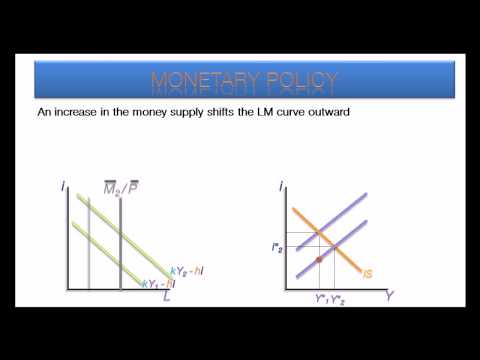What is a Simple Moving Average Trading Strategy? IIFL Knowledge Center
Content

When looking at all these averages together, we can see that the short-term average is confirmed by the intermediate- and long-term averages. The main disadvantage of any simple moving average is that they’re slow to reflect price changes. Because each period is given equal weight, day 50 counts as much as day one. As you can see, a large gain or drop hardly factors into a moving average for some time. If you use a simple moving average for buy and sell signals, your stock could experience a huge pullback well before the simple average reflects this activity. To avoid lag, consider using another analysis, such as a weighted moving average or exponential moving average.
They might go long only when the price is below the VWAP and short when the price is above VWAP. This filter would be based on the point of view that benchmark-beating buyers are more likely to create support when the price is below VWAP, than when it is above it. This filter would work well for days with relatively sideways price action.
Opposite, it’s best to buy on strength (a close above the moving average) when you use a longer moving average. Trade by Volume calculations again have the edge over OBV and Tick Volume because they can illustrate at what level the real money is beginning to close out positions. Other indicators, such as a break of the 10-day simple moving average, would need to be brought into play, particularly if trailing stop losses are to be applied. Apple Inc. (AAPL) builds a basing pattern above $105 (A) on the five-minute chart and breaks out in a short-term rally over the lunch hour (B). Five, eight, and 13-bar SMAs point to higher ground, while the distance between moving averages increases, signaling rising rally momentum. Price moves into bullish alignment on top of the moving averages, ahead of a 1.40-point swing that offers good day trading profits.
things to know before the stock market opens Friday
Therefore, waiting for the price to fall below VWAP could mean a missed opportunity if prices rise quickly. In the case where these measures generate a trading signal, trade execution levels and stop losses would need to be calculated using price-based metrics. A whole range of supporting indicators then come into play, including moving averages, Fibonacci levels and Heiken Ashi candlesticks.
- A whipsaw is when the stock crosses over the moving average, giving one signal, and then reverses quickly, giving the opposite signal.
- On a chart, VWAP and a simple moving average (SMA) may look similar.
- Typically, breakouts and breakdowns are more reliable when they are accompanied by a large volume, which suggests widespread participation by traders and investors.
- Similarly, a security trading below its 200-day simple moving average is in a long-term downtrend.
This technical analysis approach will help you learn things from the price history to identifying the swing high/swing low, trend lines, and past support or resistance areas. Average trade price is a useful metric for investors to consider when making decisions about trading in the stock market. By understanding the average cost of one share over time, investors can determine the potential return on investment and make better-informed decisions about when to buy or sell.
How to Calculate the Average Trade Price
Moving averages for day trading are used in trend identification. Also, moving averages can act as dynamic support and resistance levels. Increases in observed momentum offer buying opportunities for day traders, while decreases signal timely exits. Decreases that trigger bearish moving average crossovers in multiple time frames offer short sale opportunities, with profitable sales covered when moving averages start to turn higher.
On the one-minute chart below, the MA length is 20 and the envelopes are 0.05%. Settings, especially the percentage, may need to average traded price trading strategy be changed from day to day depending on volatility. Use settings that align the strategy below to the price action of the day.
Opening Market Update: High Hopes
Ideally, trade only when there is a strong overall directional bias to the price. If the price is in an uptrend, consider buying once the price approaches the middle-band (MA) and then starts to rally off of it. In a strong downtrend, consider shorting when the price approaches the middle-band and then starts to drop away from it.

Since OBV didn’t drop below its trendline, it was a good indication that the price was likely to continue trending higher even after the pullbacks. A rising price should be accompanied by a rising OBV; a falling price should be accompanied by a falling OBV. Then make the best judgment as to where the price is going in the future. What happened is the price hit this level but failed to break through it. In this case, we are looking for a continuation of this uptrend. You’ll learn one of the simplest trading strategies in the world.
Volume by Price
TrendSpider is a suite of research, analysis, and trading tools (collectively, the “platform) that are designed to assist traders and investors in making their own decisions. Our platform, its features, capabilities, and market data feeds are provided ‘as-is’ and without warranty. A Raindrop chart is TrendSpider’s proprietary type of chart that combines price action, volume, and sentiment into a simple and powerful chart visualization. Using the TWAP on a Raindrop chart will give it a volume-weighted effect, which will make the calculation slightly different.

For example, a trader might buy a stock if it breaks above its opening trading range. The top of a security’s trading range often provides price resistance, while the bottom of the trading range typically offers price support. Trend traders attempt to isolate and extract profit from trends. The method of trend trading tries to capture gains through the analysis of an asset’s momentum in a particular direction; there are multiple ways to do this. Of course, no single technical indicator will punch your ticket to market riches; in addition to analysis, traders also need to be well-versed in risk management and trading psychology.
Watch closely for small-scale breakouts, breakdowns, reversals and failures, using those swings as short-term entry and exit signals. The range high and low then come into play as trade filters, depending on their locations relative to the opening tick. Traders may choose to exit these trades by generating signals based on subtracting the value of the ATR from the close. The same logic applies to this rule – whenever price closes more than one ATR below the most recent close, a significant change in the nature of the market has occurred. Closing a long position becomes a safe bet, because the stock is likely to enter a trading range or reverse direction at this point.
A moving average simplifies price data by smoothing it out and creating one flowing line. Exponential moving averages react quicker to price changes than simple moving averages. In some cases, this may be good, and in others, it may cause false signals. Moving averages with a shorter look-back period (20 days, for example) will also respond quicker to price changes than an average with a longer look-back period (200 days). In addition to this, because institutional traders use the VWAP as a benchmark for execution activity, the VWAP price level is considered to be highly influential in intraday price action. The stock does not yet indicate a breakout from either trendline, which would mark an end to the range-bound trading strategy.

These are a set of trendlines plotted two standard deviations (positively and negatively) away from a simple moving average (SMA) of a security’s price that can be adjusted to user preferences. Traders may enter into a trade based on a VWAP signal and exit the trade based on a Bollinger Band signal, or vice versa. If a security is in a well-established trading range, traders can buy when the price approaches its support and sell when it reaches the level of resistance. Indicators can simplify price information, in addition to providing trend trade signals and providing warnings about reversals. Indicators can be used on all time frames, and for the most part, they have variables that can be adjusted to suit each trader’s specific preferences.
The time frame chosen for a moving average will also play a significant role in how effective it is (regardless of type). After dividing that by the 100 shares purchased, we have a weighted average trade price of $98.25 per share. They would thus assume entries for buying a stock should only occur when price is above the VWAP and short-selling entries should only be undertaken when the price is below it. This filter would be based on the point of view that benchmark watchers are unable to get the price they want and will be forced to push the stock further into its trend for the day. This filter would work well for days that had a well-defined trend for the day, whether upward or downward. As a result, a trader might use VWAP as a filter for their activity.
The volume-weighted average price (VWAP) is a measurement that shows the average price of a security, adjusted for its volume. It is calculated during a specific trading session by taking the total dollar value of trading in the security and dividing it by the volume of trades. The formula for calculating VWAP is cumulative typical price x volume divided by cumulative volume. The SMA is calculated by totaling closing prices over a certain period (say 10 days) and then dividing the total by the number of periods (10). Building an understanding of the nature of the dynamic relationship between buyers and sellers can be used to create strategies that give an indication of where price may be heading next.
Once in place, draw three lines across 5- or 15-minute charts, at the range high, range low and opening print. Relative positioning between these levels yields all sorts of useful information and trading signals. One major problem is that, if the price action becomes choppy, the price may swing back and forth, generating multiple trend reversals or trade signals. When this occurs, it’s best to step aside or utilize another indicator to help clarify the trend.
The use of the ATR is most commonly used as an exit method that can be applied no matter how the entry decision is made. One popular technique is known as the chandelier exit and was developed by Chuck LeBeau. The chandelier exit places a trailing stop under the highest high the stock reached since you entered the trade. The distance between the highest high and the stop level is defined as some multiple times the ATR. For example, we can subtract three times the value of the ATR from the highest high since we entered the trade. How close together the upper and lower Bollinger Bands are at any given time illustrates the degree of volatility the price is experiencing.
However, traders do not always need to calculate the VWAP; it is done automatically on the trading platform. The trader only needs to specify the desired number of periods in the VWAP calculation. The volume-weighted average price (VWAP) is an indicator that traders use to determine the average price that a financial instrument has traded, based on volume and price. The volume-weighted average price is calculated by multiplying the sum of price and volume, then dividing the result by the total volume. VWAP is important because it provides traders with insight into the trend and its strength.


